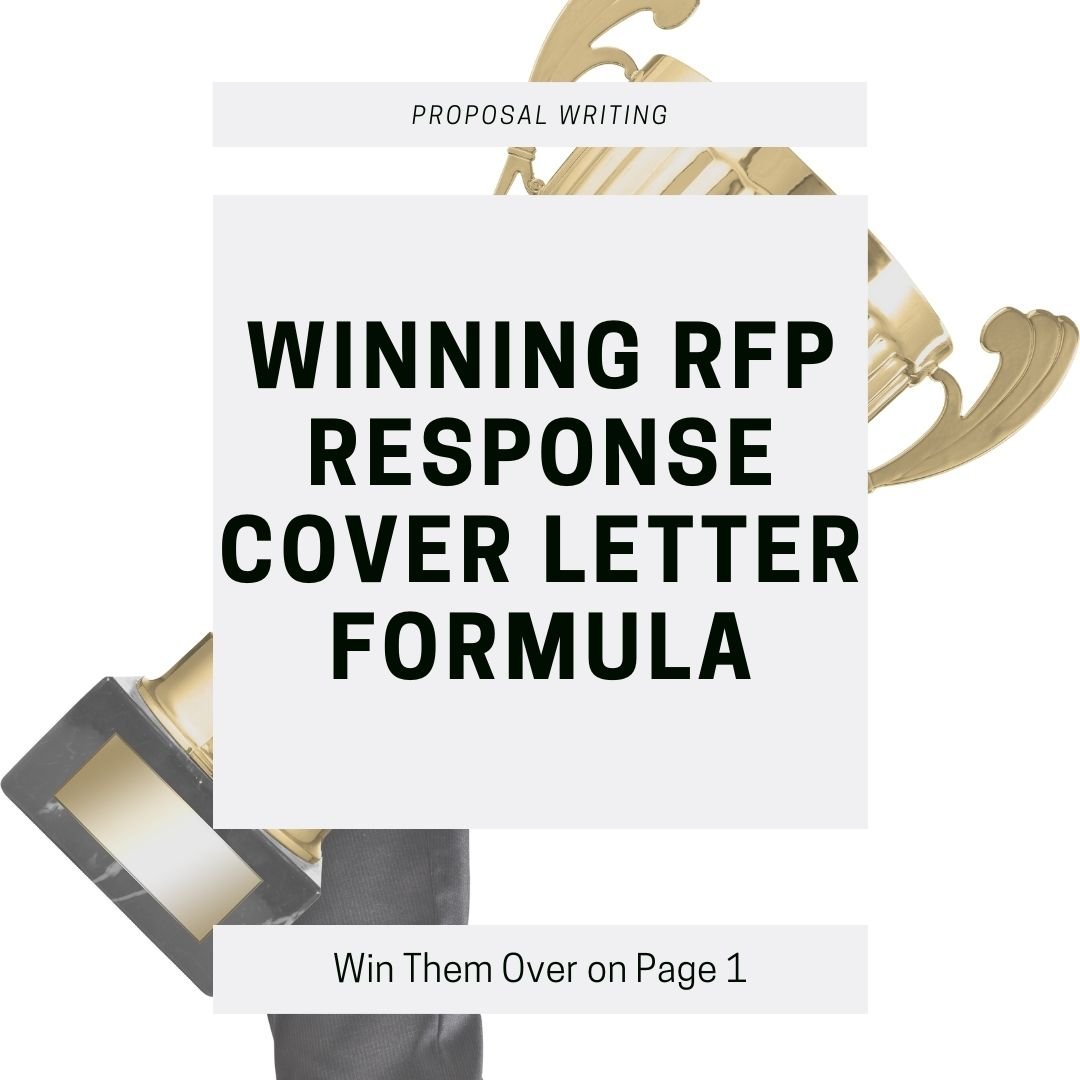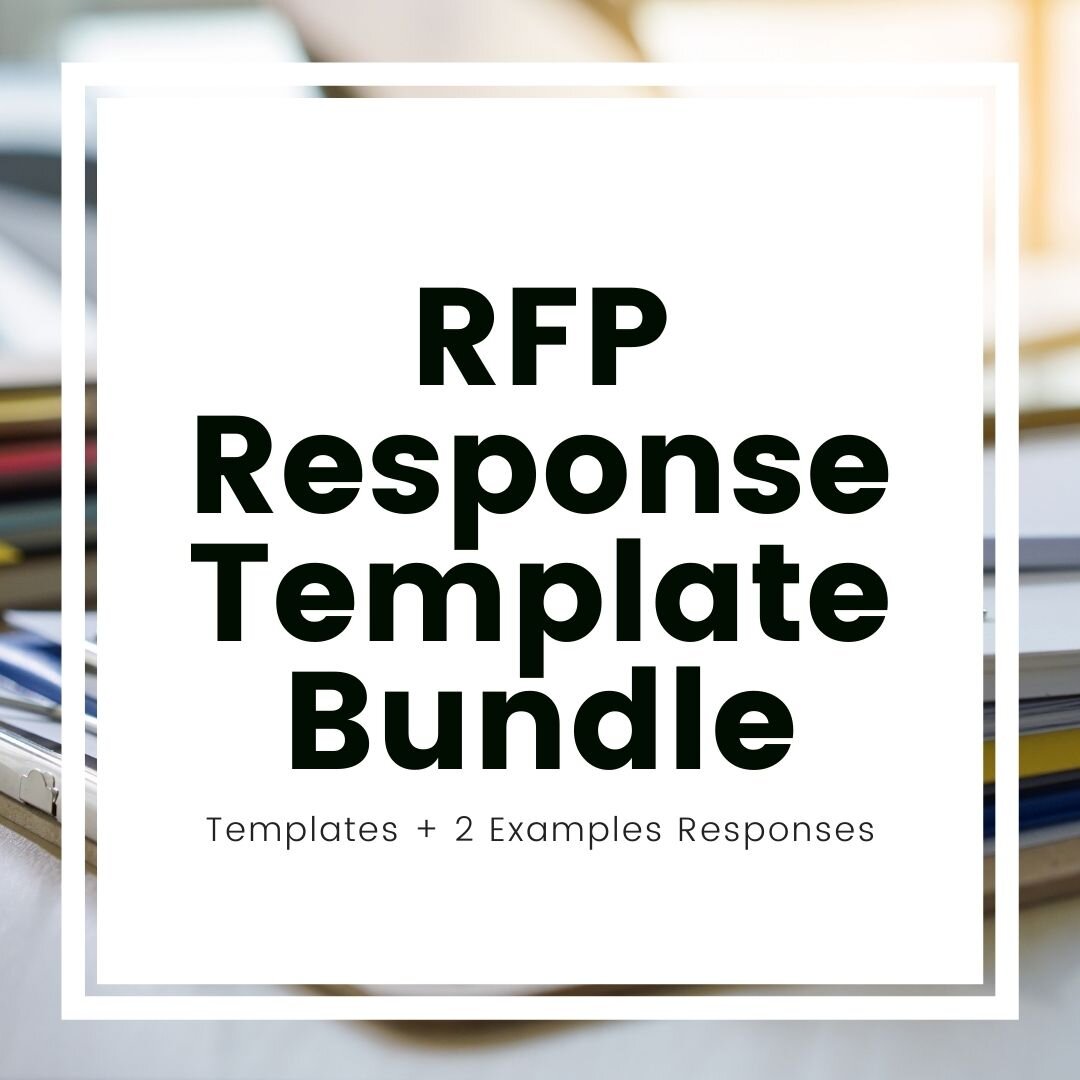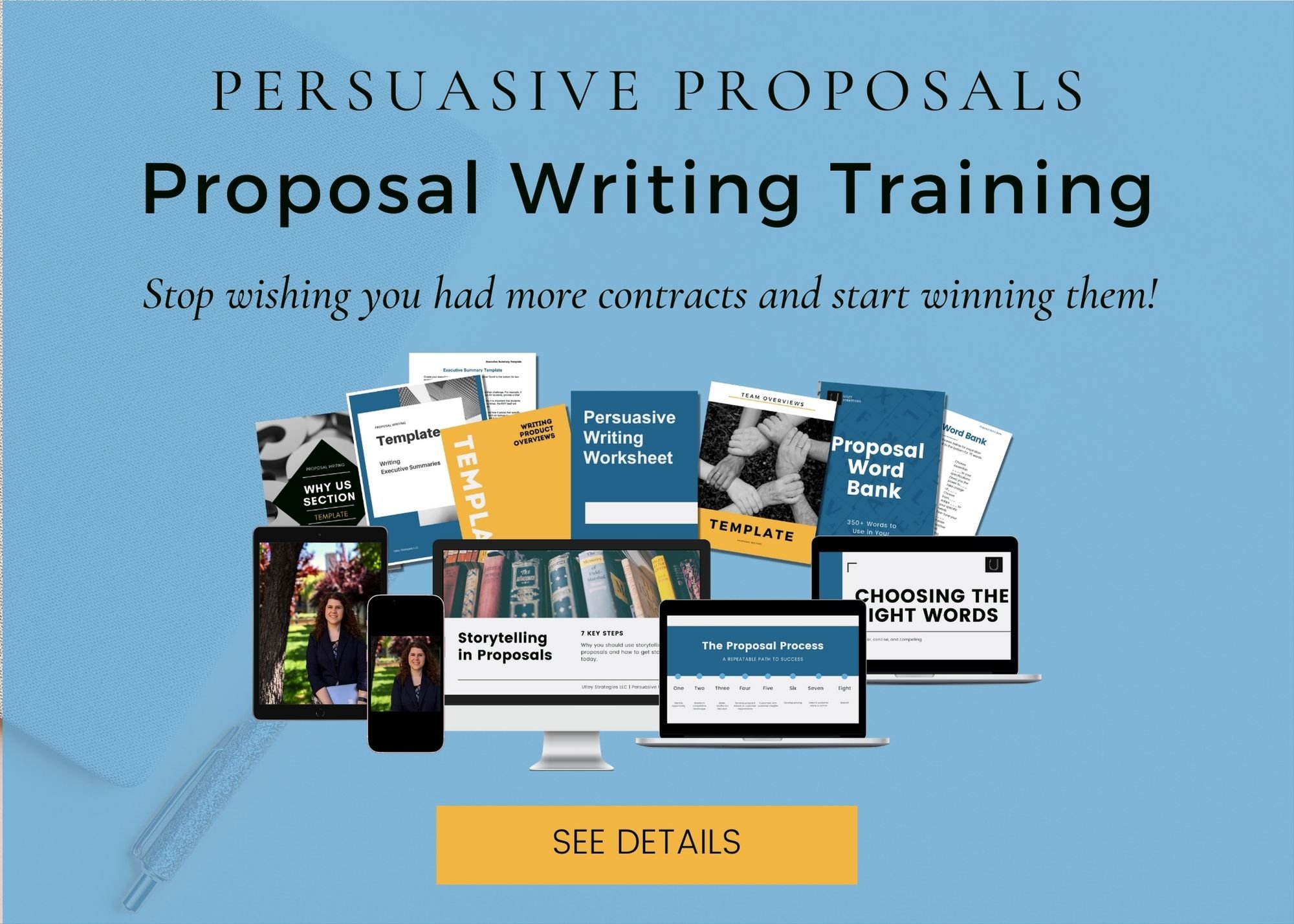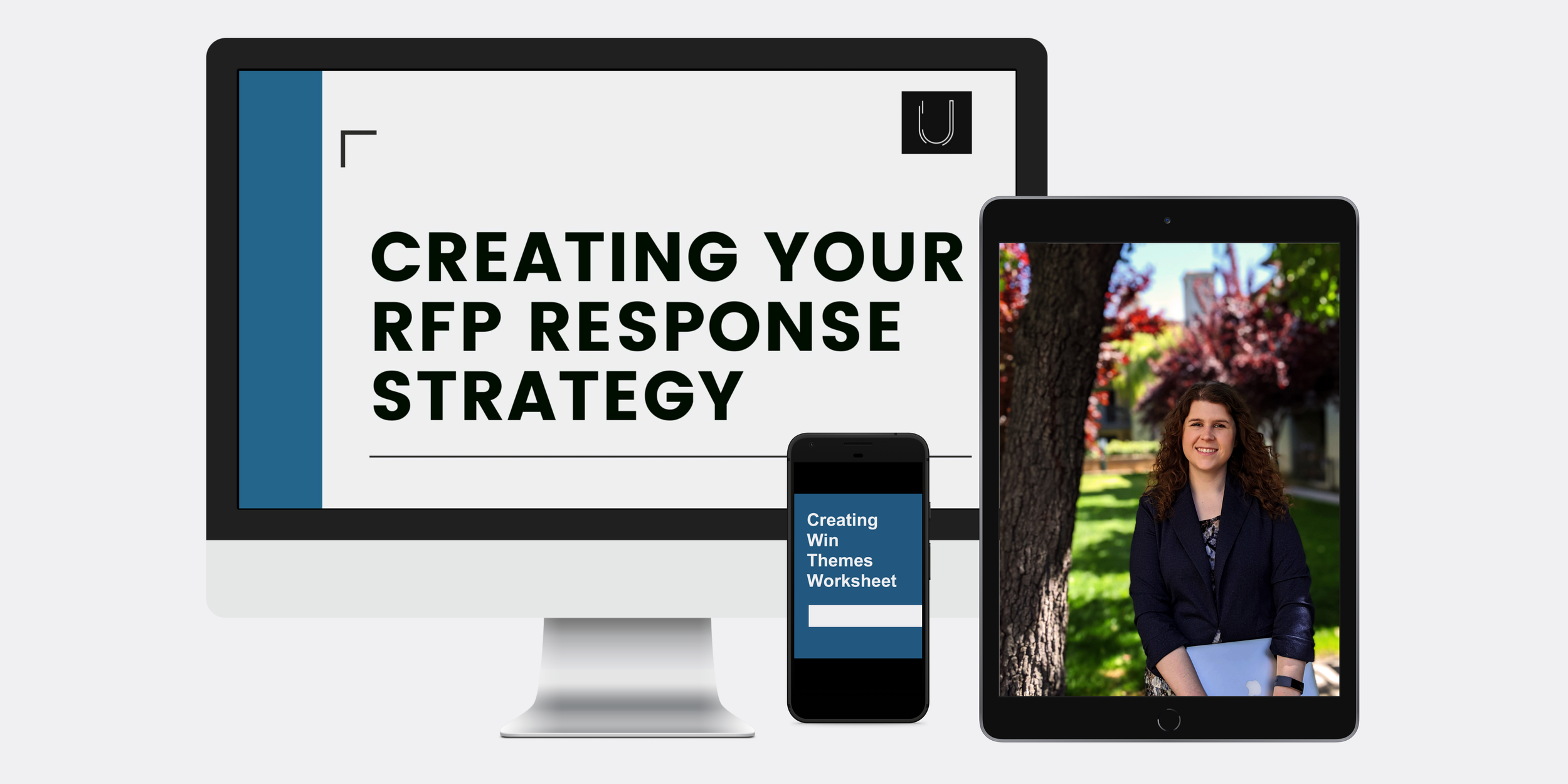A Winning formula for Your RFP Response Cover Letter
An oft-overlooked (and sometimes completely absent) section of RFP responses is the cover letter. Including a cover letter in your proposal provides a personal touch, allows you to address any administrative components, and gives a special place to sell your offering. If you want to include a cover letter in your RFP response but are not sure where to get started, read on!
Hate reading? Watch the video below instead!
What is an RFP response cover letter?
A Request for Proposal (RFP) response cover letter is simply a letter included at the beginning of your proposal that explains why you are bidding and how your solution solves the problem the customer is facing. The cover letter is often signed by the account manager or another person in the company who has a personal relationship with the customer. The goal of the cover letter is to add a personal touch to your RFP response while providing a brief overview of any key highlights of your proposal.
It is important to note that the cover letter is NOT the executive summary. These are two distinct sections of your proposal. The executive summary follows a similar layout to the cover letter, but it will provide more information on what you are offering and be less personal. Cover letters that stand out read as if you are writing a personal letter to a friend (especially if you have an existing relationship with the customer) whereas executive summaries are more formal and focused on providing an overview of your proposal. While you can combine the two if page count is a concern, it is best to keep them separate.
When should I include a cover letter?
Always! Cover letters make your proposal human and remind the buyer that there are actual people behind the document. If you make it personal, the cover letter has the potential to make your proposal stand out and inspire the reader to view your proposal more favorably. Don’t miss out on an opportunity to make a personal connection on the first page.
The only time you should not include a cover letter is if the RFP specifically says not to or has a format that won’t allow it. If in doubt, you can always ask if the cover letter will count against the page limit or format requirements during the Q&A period.
Get proposal inspiration with our RFP Response Template Bundle.
Includes 2 templates and 2 example responses.
How to write your RFP Response Cover Letter
Writing your cover letter will be a bit different than writing the other sections of your proposal. In the cover letter, you will want to take time to document any key insights that you know about the customer, such as hot button issues, fears, hopes, and other feelings around the project. If you have an existing relationship with the customer, take note of how long you have worked together, any successes you’ve had, any challenges, and their general feelings on the relationship. Once you have this information, you can set the tone for the cover letter and start drafting content.
Using your company’s letterhead, follow the four steps below to draft your cover letter:
Address customer situation and challenges
Open your first paragraph with a few sentences describing the current situation and challenge that the customer is facing. The goal here is to show that you understand why the project or contract is important to them. If you don’t have too much insight into this, you can look at the “project overview” or similar section in the RFP where they outline the project and its goals. Just make sure you don’t use the exact language from the RFP.
2. Provide brief overview of how you solve it
In the following paragraph or two, you will share how you can help them to solve this challenge. In this section, you will touch on any key points that you noted before you started writing (see paragraph above). For example, if you have been working with this customer for ten years and one of their concerns is a lapse in service from switching, then you may have a bullet point or sentence that speaks to your ability to provide the reliable service that they depend on with no lapse in service. The goal of this middle piece is to show why your company specifically is the best choice for the project while touching on some of their emotions around the work.
3. Conclude with positive vision of working together
The final paragraph should briefly summarize any key points you laid out above and then describe what life will be like working with you. Ideally you will include action verbs here that show how things will change. For example, if you’re going to help them win more projects, then you might say your partnership will result in increased revenue.
Always conclude the final paragraph with contact information to talk further, such as email or phone, of the contact person.
4. Signed by highest ranking person on the account OR person with the strongest relationship
The cover letter should be signed by the highest ranking person on the account (for example, a president or director) or the person with the strongest relationship. Since the goal of the cover letter is to create a personal connection, the person who signs it will be seen as that relationship. The signature can be either a photograph of the actual signature or a physical signature (scanned in for digital submissions). Having something handwritten adds another personal touch that a typed name does not.
Cover Letter Don’ts
Now that you know how to write your cover letter, let’s cover a few things to avoid:
Starting with “thank you for the opportunity” or any other variation. This is fluff content and doesn’t add much to your selling points. Most people will skim over this sentence anyway. If your goal is to be positioned as an authority, it can also create a subconscious belief that you’re coming to the opportunity from a point of desperation or groveling. Instead, start with a couple sentences that show you understand their current state. You’ll position your company as a partner, which is a good position as they read the rest of your proposal.
Send a simple “please see enclosed proposal”. Too many companies use the cover letter to send a short paragraph that says something about submitting the enclosed proposal in response to RFP #123. This is also fluff content and gives the reader no sense of why they should even read your proposal. If the RFP specifically asks that you include that information in a cover letter (sometimes referred to as a Transmittal Letter), you can include that information in addition to the content outlined above.
Make it too long. On the other hand, creating too long of a cover letter means the reader likely won’t read every word. Your cover letter should always fit onto one page unless it’s a very long proposal (100+ pages) or you have to use an unusually large font.
Share too detailed information. One reason your cover letter might be too long is because you’re being too detailed. Instead of trying to explain everything about your offering (you can also do this in the executive summary), keep the cover letter focused on the 3-4 points that are most compelling to the reader. Give just a highlight of those points without too much detail. This will spark their curiosity to read the proposal further.
Focus on your company. The cover letter should be about how you will help the customer achieve their goals. You can certainly highlight notable achievements of your company, but it should always specifically connect back to the customer’s goals and why those achievements help them to achieve them. Do not list your company history, services, employee information, or other “marketing” material in the cover letter.
Leave it out. Make sure you include the cover letter! Some companies avoid them altogether and prefer to let the proposal speak for itself. They miss out on an easy way to form a connection with the buyer. You don’t want to be the only bidder without a cover letter, but you may be lucky enough to be the only company who has one.
RFP RESPONSE STRATEGY MASTERCLASS
Learn how to create a winning RFP response strategy in just one hour!
Next Steps
Now that you know what to include in your cover letter, it’s time to get started! Take your time writing the cover letter, and feel free to wait to write it last. Sometimes it’s easiest to pull together everything else first and use that success to guide your writing in the cover letter.
If you need more guidance, make sure you check out our free cover letter template below.





